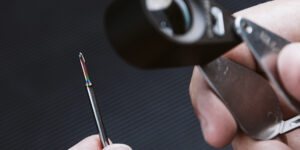How to Increase Robotic Laser Cutting Path Accuracy
As laser cutting continues to emerge, the programming flexibility of these laser cutting software tools from ABB Robotics take robotic laser cutting to the next level.
Posted: November 22, 2012
As laser cutting continues to emerge, the programming flexibility of RobotStudio Cutting PowerPac and RobotWare Cutting laser cutting software tools take robotic laser cutting to the next level.
Laser cutting has emerged as the optimal means to cut and trim hot stamped steel, the light weight, high strength materials increasingly used in the automotive industry to reduce the overall cost and weight of cars while improving both passenger safety and fuel economy. The technology is also increasingly used to cut many hydroformed, electronic and plastic parts in a variety of industries.
Laser cutting is a non-contact process, so the laser equipment does not wear and no trim presses or trim dies are required. The process is highly precise, and trim lines and feature sizes and locations can be easily adjusted to handle a wide variety of parts. Robotic laser cutting offers several advantages over traditional 5-axis laser cutting machines, including up to a 35 percent lower initial investment, reduced operational costs, and a smaller footprint that allows easier integration into existing manufacturing systems.
ABB Robotics (Auburn Hills, MI) has introduced two new, seamlessly integrated laser cutting software products that make laser cutting with ABB robots more accurate, highly flexible, and easier to program and operate.
The new RobotStudio Cutting PowerPac is an add-on to RobotStudio, the 3D offline simulation programming tool that allows operators to generate and modify program cutting paths based on part geometry and CAD models.














